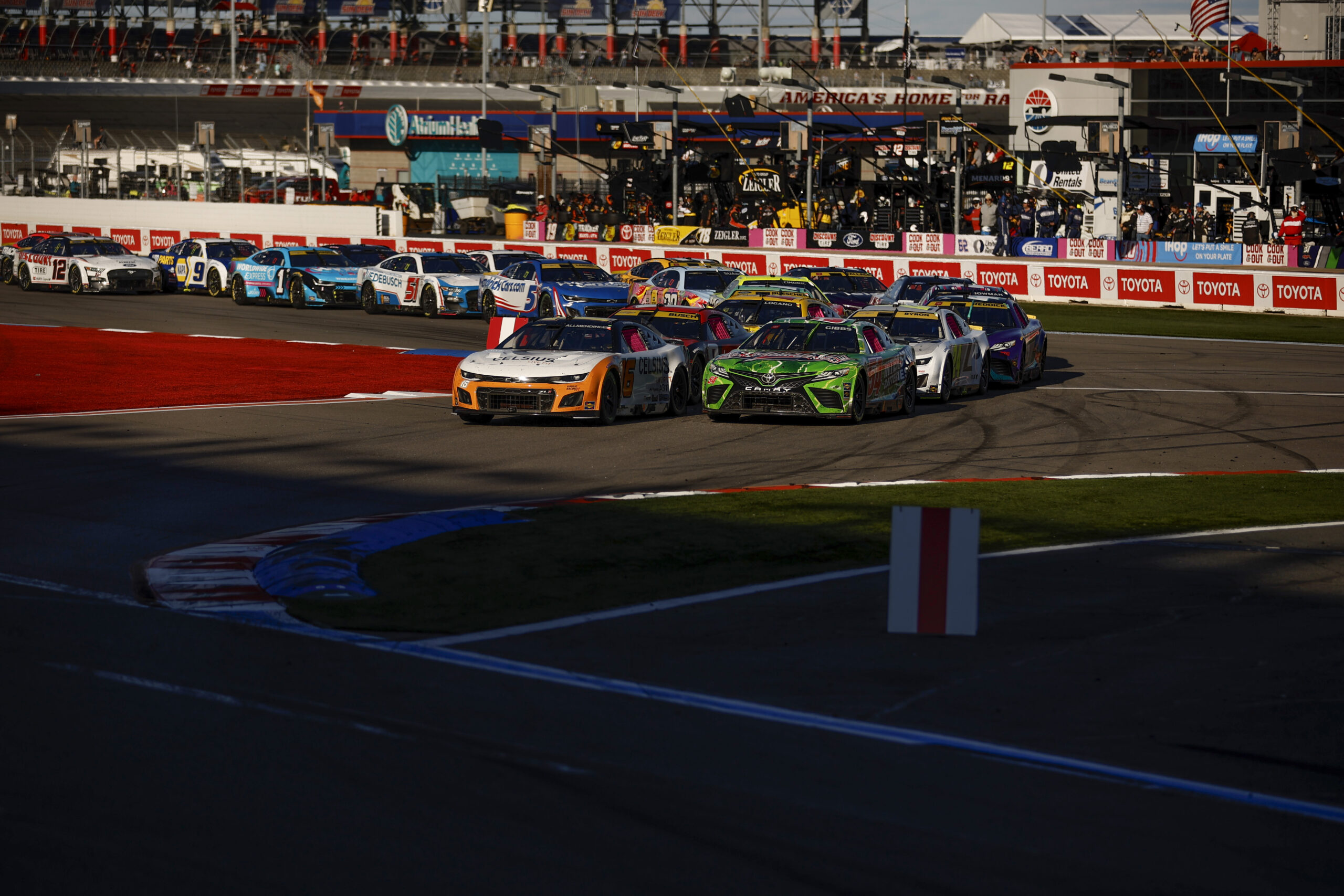
The 2023 NASCAR season is drawing toward its conclusion, and one of the hot topics of the season is the road course product. Road courses have become a bigger part of the schedule in recent years with six road courses (Including the Chicago Street Race) in 2023, five scheduled in 2024, and as many as seven in a season since the 2020s began. Some people have decried this product as the worst road course product NASCAR has ever had, but, how bad is it really?
In 2023, road course races have received mixed reviews, to say the least. Some races were received very well, but others were received not so well. In order to get some idea of how these road course races were received, here are the results of Jeff Gluck’s “Was it a Good Race?” poll for road course races in 2023, we will analyze these races further.
It’s also worth noting from this poll that Watkins Glen and Sonoma were two of the three worst-received races so far this year. However, you look at races like COTA and the Chicago Street Race, and those were received fairly well compared to other road course races.
Taking a look at these races one by one, it is interesting how road course races truly have gone back and forth this season. Circuit of the Americas, which was the first race of the stage racing era to not have stage cautions (more on that later), was fairly well-received for the interesting strategy race it was shaping up to be before it turned into a wreckfest late. Sonoma was the exact opposite where Martin Truex Jr. just pulled away and dominated, and it seemed that drivers had a difficult time passing each other.
Then came Chicago, where adverse conditions and NASCAR changing the race length mid-race caused a jumbled running order combined for an entertaining show. The Indy Road Course was fun because of who was involved in battling for the win, but, again, it was noticeable how hard it was to pass.
Watkins Glen saw the top-5 cars sit nose to tail with no passing over the final 30 laps, plus one caution meant a sub-2 hour race. NASCAR then decided to bring back stage cautions at the Roval, but, the race has not been particularly well-received by fans.
Now, it is worth noting that the Roval coming back to the 2024 schedule is controversial amongst fans along with stage cautions coming back, so, that bias may have skewed those results just a bit. There was a fun battle at the front towards the end where A.J. Allmendinger showed his prowess on road courses over William Byron, but some may not have loved how it devolved into a wreckfest at the end.
At the end of the day, the road course product is definitely far from perfect, but there have been good road course races. The question becomes how can NASCAR improve the road course product? Let’s take a look at the two things that people point to with road course races, stage breaks, and the Next-Gen car.
It’s obvious why NASCAR brought stage cautions back on road courses. They brought it back to allow for more restarts and closer racing. The previous two road course races at Indianapolis and Watkins Glen each had one caution each with only two cautions at Sonoma in June.
Now, stage cautions do bunch the field up due to having two planned restarts throughout the race, but, at what cost? Now, teams are left with the decision to either pit early and sacrifice stage points for a better track position later, or stay out for stage points which puts you in a bad track position later. With how hard it is to pass on road courses with the Next-Gen car, that’s a tough decision.
The lack of stage cautions at least allowed teams to run their strategy backward from the end of the race rather than around two pre-planned cautions. Regardless of that fact, whether or not NASCAR runs a race with stage cautions on road courses is a smokescreen for the real problem. Dale Earnhardt Jr. even said in his reaction to the Sonoma race on the Dale Jr. Download on the topic of stage cautions, “If the product on the track were better, I wouldn’t care.”
At the end of the day, regardless of how bad the road course product really is, the Next-Gen car is the biggest problem. The issues we see on short tracks are the same issues we see on road courses. The cars are so equal and so durable that it is hard to pass.
On top of that, the lack of horsepower combined with powerful brakes decreases the braking zones. This means that even if a driver is a bit faster than the car in front of them unless they are right on their back bumper, they can’t make a move, and that is what we saw at Watkins Glen.
The problem is that the best solutions such as increasing horsepower or adjusting the tires or brakes are impossible to do without spending a lot of money or making significant changes to the car. At the end of the day, if NASCAR is not willing to spend the money to make those changes, then they won’t be made.
The current road course product may not be the worst it possibly can be, but it is very inconsistent at best. It’s not a perfect product, and there is room for improvement. The issue is whether or not NASCAR can make the changes they need to.
